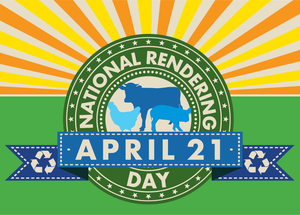New Quality Loss Adjustment program offers additional assistance for crop and livestock producers who experienced quality losses.

Just days after Congress appropriated additional disaster funds, USDA announced signups will begin Wednesday, Jan. 6, for the new Quality Loss Adjustment program. Funded by the Further Consolidated Appropriations Act of 2020, this new program provides assistance to producers who suffered eligible crop quality losses due to natural disasters occurring in 2018 and 2019. The deadline to apply for QLA is Friday, March 5, 2021.
Many of the eligible producers have already received compensation for quantity losses of events such as hurricanes, wildfires, excessive moisture, flooding and drought through the Wildfire and Hurricane Indemnity Program Plus. The new QLA program allows for additional payments based on quality losses to the crop or livestock, explains Bill Northey, USDA Under Secretary for Farm Production and Conservation.
Northey says so far $1.5 billion has been paid out for the WHIP+ program, and the latest congressionally approved funds added $2.5 billion for disaster assistance. He projects the QLA program will have “well less than $1 billion” available and depends on final applicants and their loss requests.
Steve Peterson, associate administrator for the Farm Service Agency, says there are over 1,200 WHIP+ applications not entered into the system and many others are various stages in the process. He says the goal will be to get those processed by the end of January “so we can identify and figure out the outstanding dollar amount that we still need” to offer the protection promised under WHIP+.
Richard Fordyce, FSA administrator, shares that payments won’t be initiated until the signup is complete on March 5, allowing USDA to equally distribute whatever funds are still available. If the total amount of calculated QLA payments exceeds available program funding, payments will be prorated.
“We have worked diligently over the past couple of years to roll out meaningful disaster assistance programs to help alleviate the substantial financial loss experienced by so many agricultural producers and are pleased to offer quality loss assistance as added relief. Many of the eligible producers have already received compensation for quantity losses,” Northey says.
Who’s eligible?
Eligible crops include those for which federal crop insurance or Noninsured Crop Disaster Assistance Program coverage is available, except for grazed crops and value loss crops, such as honey, maple sap, aquaculture, floriculture, mushrooms, ginseng root, ornamental nursery, Christmas trees and turfgrass sod.
Additionally, crops that were sold or fed to livestock or that are in storage may be eligible; however, crops that were destroyed before harvest are not eligible. Crop quality losses occurring after harvest, due to deterioration in storage, or that could have been mitigated, are also not eligible.
Assistance is based on a producer’s harvested affected production of an eligible crop, which must have had at least a 5% quality loss reflected through a quality discount; or for forage crops, a nutrient loss, such as total digestible nutrients.
Losses must have been a result of a qualifying disaster event (hurricane, excessive moisture, flood, qualifying drought, tornado, typhoon, volcanic activity, snowstorm, or wildfire) or related condition that occurred in calendar years 2018 and/or 2019.
Assistance is available for eligible producers in counties that received a qualifying Presidential Emergency Disaster Declaration or Secretarial Disaster Designation because of one or more of the qualifying disaster events or related conditions.
Lists of counties with Presidential Emergency Disaster Declarations and Secretarial Disaster Designations for all qualifying disaster events for 2018 and 2019 are available here. For drought, producers are eligible for QLA if the loss occurred in an area within a county rated by the U.S. Drought Monitor as having a D3 (extreme drought) or higher intensity level during 2018 or 2019.
Producers in counties that did not receive a qualifying declaration or designation may still apply but must also provide supporting documentation to establish that the crop was directly affected by a qualifying disaster event, Fordyce says.
Applying for QLA
When applying, producers are asked to provide verifiable documentation to support claims of quality loss or nutrient loss in the case of forage crops. For crops that have been sold, grading must have been completed within 30 days of harvest, and for forage crops, a laboratory analysis must have been completed within 30 days of harvest.
Some acceptable forms of documentation include sales receipts from buyers, settlement sheets, truck or warehouse scale tickets, written sales contracts, similar records that represent actual and specific quality loss information, and forage tests for nutritional values.
Payments calculations and limitations
QLA payments are based on formulas for the type of crop (forage or non-forage) and loss documentation submitted. Based on this documentation FSA is calculating payments based on the producer’s own individual loss or based on the county average loss. More information on payments can be found on farmers.gov/quality-loss.
All producers receiving QLA Program payments are required to purchase crop insurance or NAP coverage for the next two available crop years at the 60% coverage level or higher.
For more information, visit farmers.gov/quality-loss, or contact your local USDA Service Center. Producers can also obtain one-on-one support with applications by calling 877-508-8364.
About the Author(s)
You May Also Like




.png?width=300&auto=webp&quality=80&disable=upscale)
